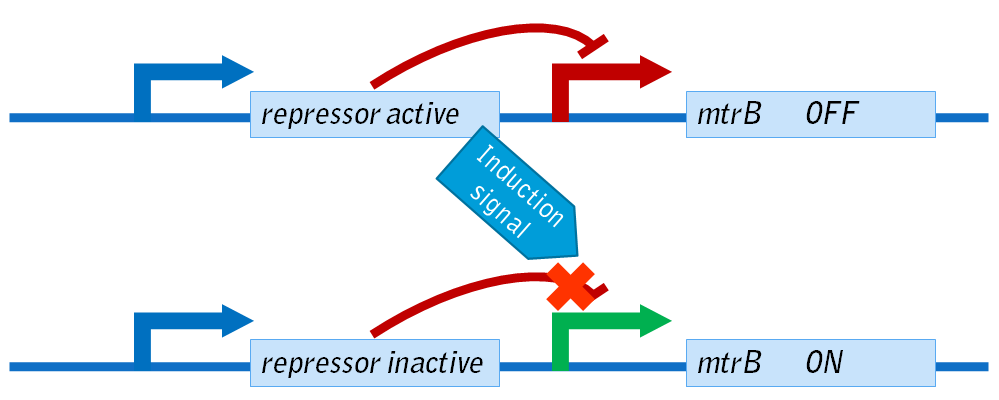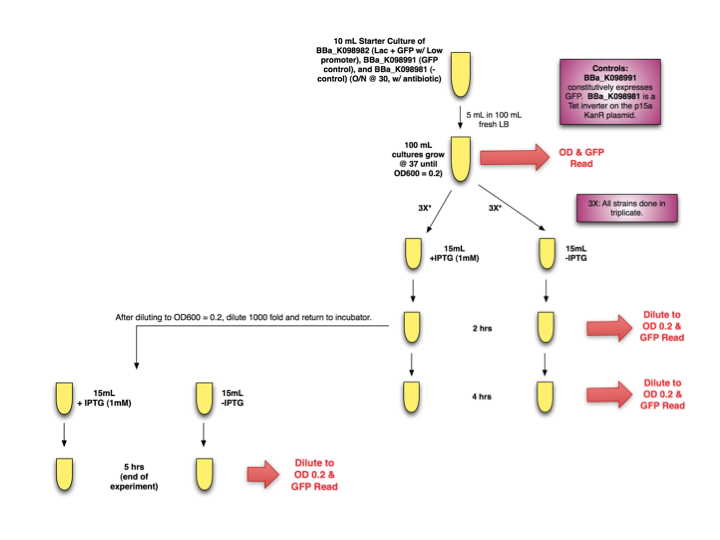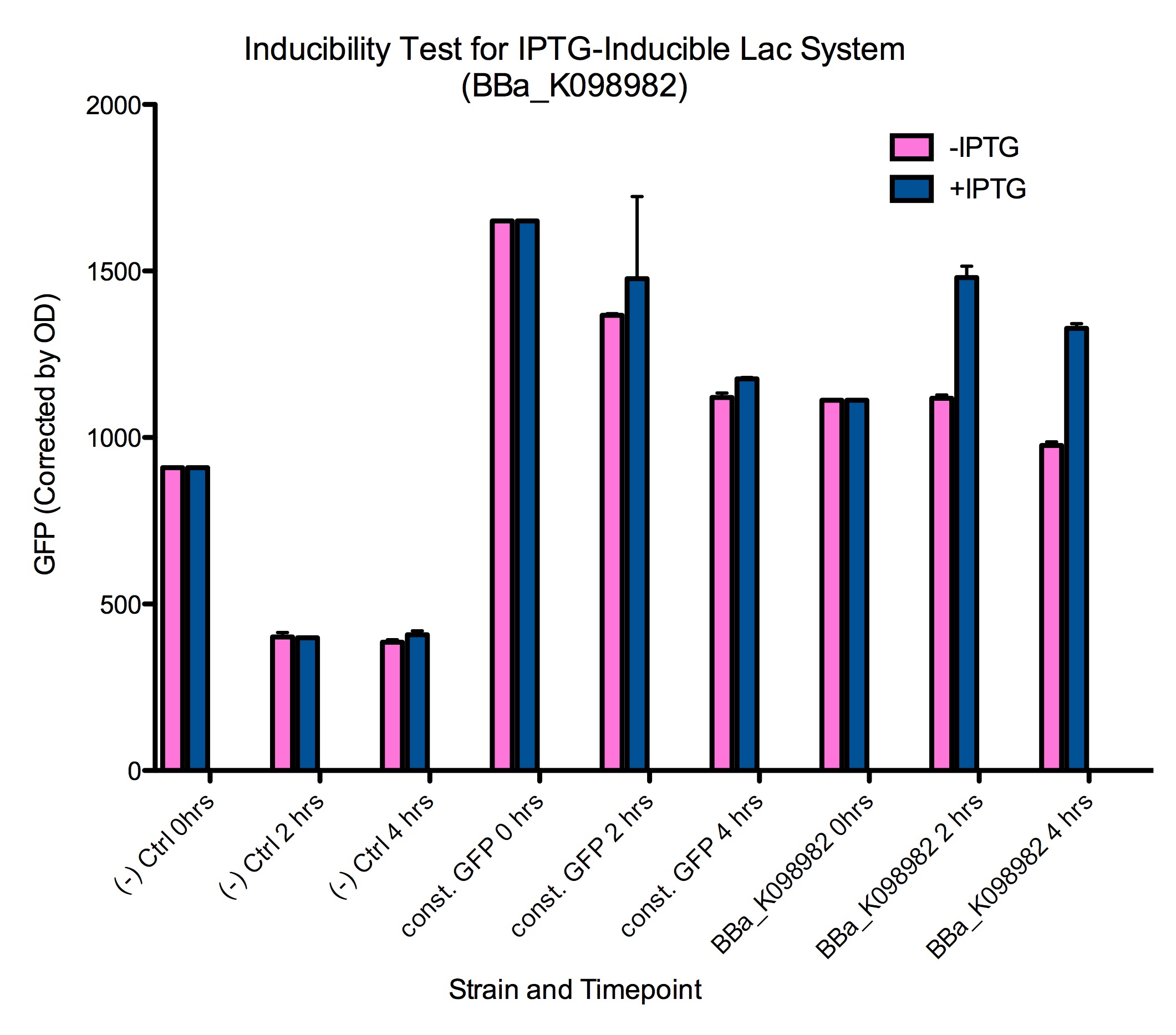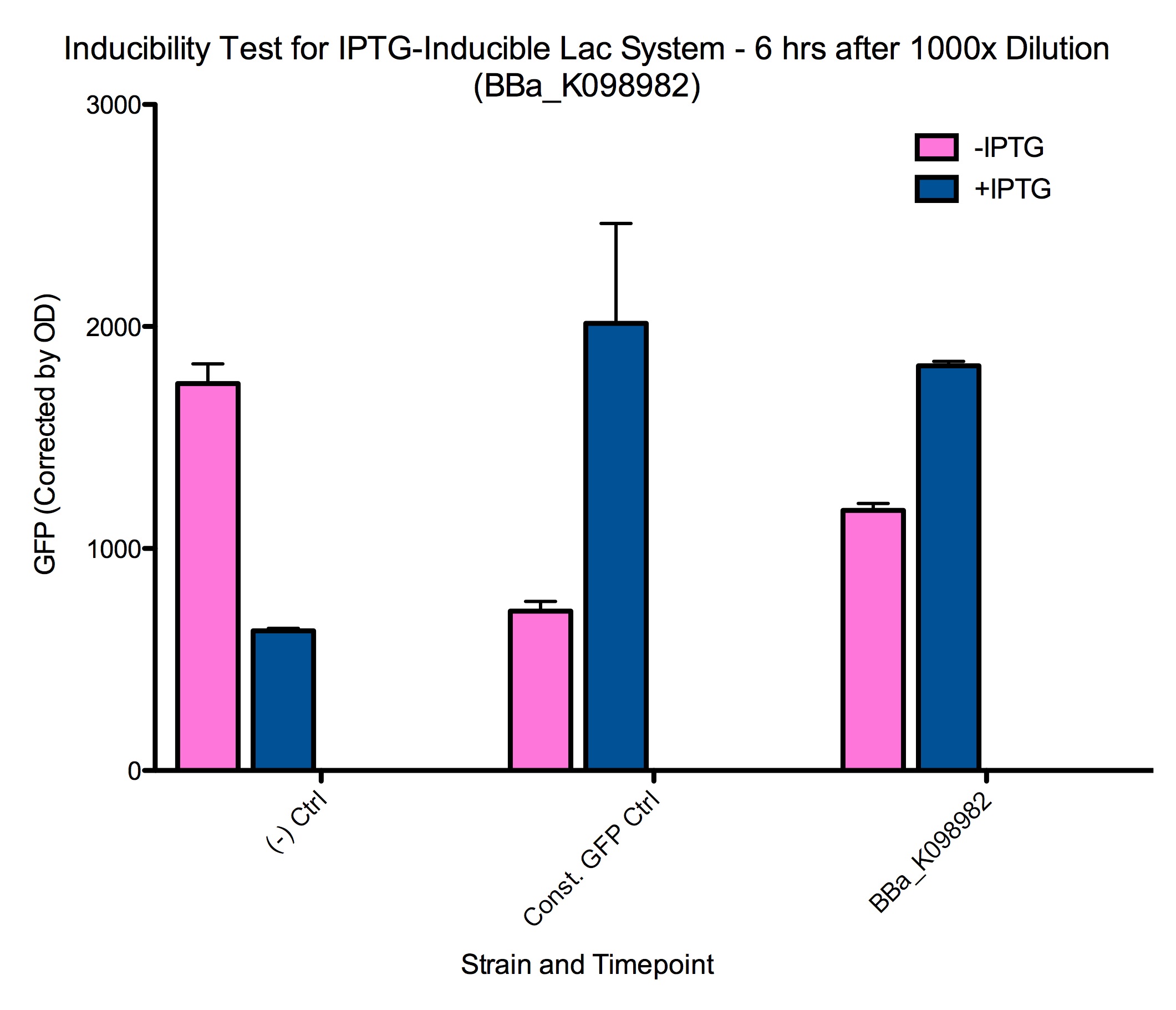Team:Harvard/Parts
From 2008.igem.org
(Difference between revisions)
(→Thermoinducible cI System) |
(→lac system (will be moved to separate page)) |
||
| Line 81: | Line 81: | ||
<div style="text-indent:0pt">[[Image:BBa_K098984.png|thumb|650px|center|BBa_K098984 with BioBrick Prefix and Suffix]]</div> | <div style="text-indent:0pt">[[Image:BBa_K098984.png|thumb|650px|center|BBa_K098984 with BioBrick Prefix and Suffix]]</div> | ||
| + | |||
| + | ====Inducibility Test for Lac System with GFP Reporter and Weak Promoter==== | ||
| + | An induction test was designed to test the inducibility of the lac system by IPTG when the repressor (LacI) is driven by a weak promoter. | ||
| + | =====Experimental Design===== | ||
| + | [[Image:Lac.png|thumb|150px|Lac Induction Experimental Design]]<br> | ||
| + | Starter cultures of E. coli with [http://partsregistry.org/wiki/index.php?title=Part:BBa_K098982 BBa_K098982] were grown overnight. They were then diluted and grown to OD 0.2 before separation into induced (+IPTG, 1mM) and uninduced cultures (-IPTG). OD and GFP readings were taken at time 0, 2, and 4 hours. Additionally, after diluting T=2hrs samples to OD 0.2 for accurate GFP measurements, samples were further diluted 1000x, induced (or not induced) again, and placed back in the incubator until the end of the experiment, when OD and GFP readings were taken. | ||
| + | |||
| + | =====Results===== | ||
| + | Induction of GFP expression was observed at both 2 and 4 hours after adding IPTG. Levels of GFP expression in uninduced samples, however, remained relatively the same throughout the 4 hours. Meanwhile, IPTG induction was not observed in either the negative control ([http://partsregistry.org/wiki/index.php?title=Part:BBa_K098981 BBa_K098981]) or the constitutive GFP control ([http://partsregistry.org/wiki/index.php?title=Part:BBa_K098991 BBa_K098991]). | ||
| + | [[Image:Lac.jpg|800px|Lac Inducibility Results]]<br> | ||
| + | The 1000x dilutions of samples at 2 hours after induction produced similar results after 5-6 hours. These cells are presumably at a different growth phase from cells that have been growing at much higher concentration for longer, and are thus induced in different conditions. | ||
| + | [[Image:Lac1000.jpg|800px|Lac Inducibility 1000x Results]] | ||
===QPIs that we did not use with mtrB=== | ===QPIs that we did not use with mtrB=== | ||
Revision as of 06:12, 29 October 2008
 "
"





